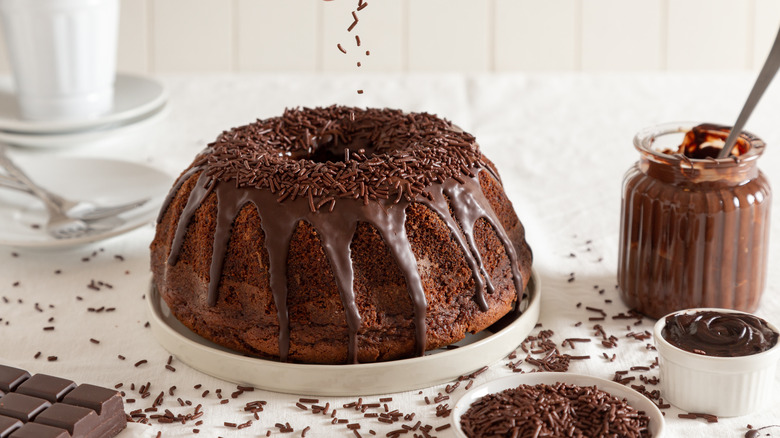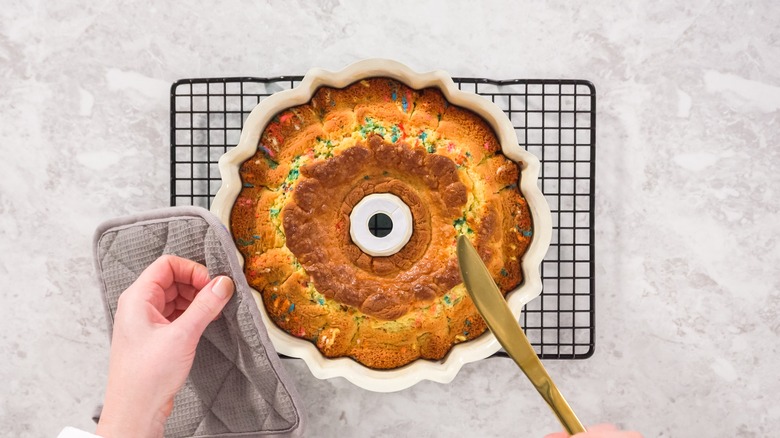Why You Can't Just Use Any Type Of Batter In A Bundt Pan
There is more than one way to bake a cake and more than one kind of cake to try and make. But when it comes to Bundt cakes, baking rules become a bit stricter. So, what is a Bundt cake? Well, to know what a Bundt cake is, you have to first know the Bundt pan. Recipe Tips says that a Bundt pan is a thick baking pan made distinct by its pattern. Bundt pans traditionally have some kind of decorative pattern or shape which the cake is baked into. Some have an elaborate swirling pattern, while others can look geometric in shape. But they all have a hole in the center of the pan that allows the cake to cook from the inside out unlike sheet cakes or circular cakes, which bake from the outside in.
According to Food & Wine, Bundt cakes originated in Eastern Europe but Bundt pans weren't invented until 1950 by H. David Dalquist, owner of Minnesota's Nordic Ware company. From there, the cake took off in popularity, especially with those who like bake super dense desserts. However, not all cakes can handle Bundt pans.
Bundt pans are not for the soft
When planning a Bundt cake, there are a few baking rules you should abide by to ensure that it will be a success. Food52 says that first and foremost, you should not use a cheap, thin Bundt pan. Heavy-duty pans will define the shape of the cake better and will provide a more consistent bake throughout the dessert. The next thing you must remember is that soft delicate cakes don't always turn out well when baked in a Bundt pan.
Soft cakes rip and tear much more easily when you attempt to remove them from the decorative pan. Additionally, Martha Stewart claims that the denser the cake batter, the better the Bundt. Dense cakes naturally have a tight, moist crumb structure and will hold the shape of the pan better as well as refrain from drying out. Martha Stewart advises using thick desserts like pound cake and zucchini bread instead of boxed cake mixes or any cake recipe that you'd describe as "light" or "fluffy."

